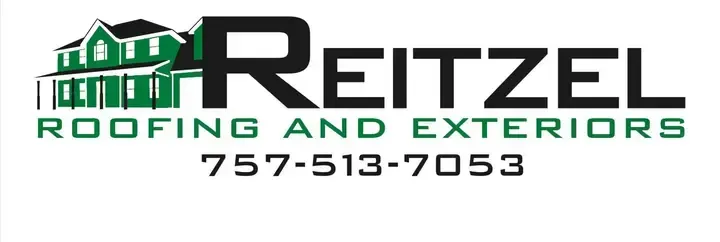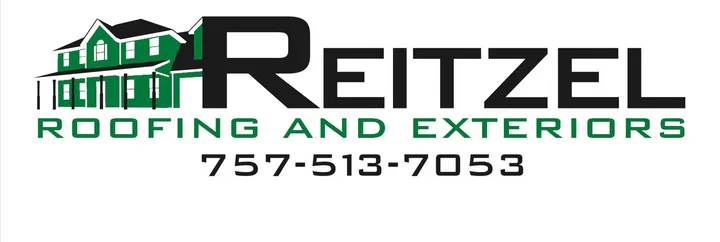LEARNING CENTER
CHECK OUT SOME OF OUR LATEST ARTICLES FROM IN OUR LEARNING CENTER

Upgrading Your Home's Exterior: Signs It's Time to Replace Your Siding
As a home buyer, one of the most important aspects to consider when evaluating a property is its exterior condition. The siding of a house not only contributes to its aesthetic appeal but also plays a crucial role in protecting the structure from the elements. Understanding the siding replacement indicators can help you make informed decisions about potential home purchases or necessary upgrades to your current property. In this comprehensive guide, Reitzel Exteriors will walk you through the key siding replacement indicators to watch for, ensuring you're well-equipped to assess a home's exterior condition.
Why Siding Matters
Before diving into the specific siding replacement indicators, it's essential to understand why siding is so crucial for a home:
1. Protection: Siding acts as a protective barrier against weather elements, including rain, snow, wind, and UV rays.
2. Insulation: Proper siding contributes to a home's energy efficiency by providing an additional layer of insulation.
3. Aesthetics: Siding significantly impacts a home's curb appeal and overall value.
4. Structural Integrity: Well-maintained siding helps prevent moisture infiltration, which can lead to structural damage.
Now, let's explore the key siding replacement indicators that every home buyer should be aware of.
1. Visible Damage and Deterioration
One of the most obvious siding replacement indicators is visible damage or deterioration. When inspecting a home's exterior, look for the following signs:
a) Cracks or Gaps: Small cracks or gaps in the siding can allow moisture to penetrate, potentially leading to more severe damage.
b) Warping or Bulging: These issues can indicate water damage or poor installation and are clear siding replacement indicators.
c) Rotting: Particularly common in wood siding, rotting is a serious issue that requires immediate attention.
d) Holes or Dents: These can be caused by impacts from hail, debris, or even woodpeckers, and may compromise the siding's protective capabilities.
e) Loose or Missing Panels: Siding that has come loose or is missing entirely leaves the underlying structure vulnerable to the elements.
If you notice any of these visible siding replacement indicators, it's crucial to consider the extent of the damage and whether a full replacement might be necessary.
2. Fading or Discoloration
While some degree of fading is normal over time, excessive or uneven discoloration can be one of the siding replacement indicators to watch for. Consider the following:
a) Severe Fading: If the siding color has faded dramatically, it may be nearing the end of its lifespan.
b) Uneven Coloration: Patches of discoloration could indicate water damage or other underlying issues.
c) Chalking: A chalky residue on the siding surface is a sign of breakdown in the material's composition.
Keep in mind that while fading alone may not necessitate immediate replacement, it can be one of the siding replacement indicators that suggests the material is aging and may need attention in the near future.
3. Increased Energy Bills
While not as visible as other siding replacement indicators, a sudden or gradual increase in energy bills can suggest that your siding is no longer providing adequate insulation. Consider the following:
a) Rising Heating Costs: If your heating bills have been steadily increasing without a corresponding rise in energy prices, your siding may be allowing heat to escape.
b) Difficulty Maintaining Indoor Temperature: If you find it challenging to keep your home at a consistent temperature, it could be due to poor insulation from aging siding.
c) Cold Spots Near Walls: Feel the interior walls of the home. If you notice cold spots, particularly near corners or windows, it may indicate that the siding is no longer providing adequate insulation.
These energy-related issues are important siding replacement indicators to consider, as they not only affect your comfort but also your long-term costs as a homeowner.
4. Interior Signs of Moisture
Sometimes, siding replacement indicators can be found inside the home. Look for these signs of moisture infiltration:
a) Peeling Wallpaper or Paint: Especially near the edges of walls or ceilings, this can indicate that moisture is seeping through the siding.
b) Water Stains: Discolored patches on walls or ceilings can be a sign that water is penetrating the siding and affecting the interior.
c) Mold or Mildew Growth: The presence of mold or mildew, particularly on exterior walls, suggests that moisture is getting through the siding.
d) Musty Odors: Persistent musty smells can indicate hidden moisture problems, potentially related to failing siding.
These interior siding replacement indicators are particularly important to note, as they suggest that the siding issues have progressed to a point where they're affecting the home's interior.
5. Frequent Painting Requirements
If a home requires repainting more often than usual, it could be one of the siding replacement indicators to watch for. Consider the following:
a) Paint Chipping or Peeling: If the exterior paint is consistently chipping or peeling, it may indicate that the siding is no longer holding paint effectively.
b) Frequent Repainting: If the home needs to be repainted every 5-6 years instead of the typical 8-10 years, it could suggest that the siding is deteriorating.
c) Uneven Paint Adherence: Areas where paint doesn't adhere well or bubbles up can indicate underlying moisture issues with the siding.
While repainting can temporarily improve a home's appearance, frequent painting needs are siding replacement indicators that suggest a more permanent solution may be necessary.
6. Age of the Siding
The age of the siding is one of the most reliable siding replacement indicators. Different materials have varying lifespans:
a) Vinyl Siding: Typically lasts 20-40 years
b) Wood Siding: Can last 20-40 years with proper maintenance
c) Fiber Cement Siding: Often lasts 50 years or more
d) Aluminum Siding: Generally lasts 20-40 years
If the siding is approaching or has exceeded these timeframes, it's wise to consider replacement, even if there are no visible issues. Aging siding is more prone to damage and may not provide optimal protection or energy efficiency.
7. Pest Infestations
Evidence of pest infestations can be crucial siding replacement indicators. Look for:
a) Small Holes: Tiny holes in the siding could indicate insect activity, such as carpenter bees or termites.
b) Visible Insect Activity: If you see insects entering or exiting the siding, it's a clear sign of infestation.
c) Animal Damage: Larger holes or damaged areas could be caused by rodents or other animals trying to access the home.
d) Hollow Sounds: When tapping on the siding, a hollow sound could indicate that pests have compromised the material's integrity.
Pest-related damage is among the most serious siding replacement indicators, as it can quickly lead to extensive and costly damage if not addressed promptly.
8. Excessive Moisture Retention
Siding that retains excessive moisture is at risk of damage and is one of the key siding replacement indicators to watch for:
a) Swelling: If the siding appears swollen or bloated, it's likely retaining water.
b) Bubbling: Bubbles or blisters in the siding surface can indicate trapped moisture.
c) Crumbling: Areas of the siding that are soft or crumbling to the touch suggest severe water damage.
d) Algae or Moss Growth: While some growth is normal in shaded areas, excessive algae or moss can indicate persistent moisture issues.
These moisture-related siding replacement indicators are particularly important to address quickly, as they can lead to more severe structural issues if left unchecked.
9. Increased Maintenance Requirements
If you find yourself spending more time and money on siding maintenance, it could be one of the siding replacement indicators suggesting that a full replacement might be more cost-effective in the long run. Consider:
a) Frequent Repairs: If you're constantly patching or repairing sections of siding, it may be time for a full replacement.
b) Difficulty Cleaning: Siding that's becoming increasingly difficult to clean may be deteriorating and losing its protective properties.
c) Sealant Issues: If you need to re-caulk or reseal areas around the siding more frequently, it could indicate overall deterioration.
While some maintenance is normal, excessive upkeep requirements are siding replacement indicators that suggest the material may be past its prime.
10. Outdated Style or Material
While not a functional issue, outdated siding can significantly impact a home's value and appeal. Consider these aesthetic siding replacement indicators:
a) Obsolete Colors or Patterns: Siding colors or patterns that are clearly from a bygone era can date the entire home.
b) Discontinued Materials: If the siding material is no longer widely used or available, repairs and partial replacements can be challenging and costly.
c) Mismatched Sections: If previous repairs have resulted in mismatched siding sections, it may be time to consider a full replacement for a cohesive look.
While these may not be urgent siding replacement indicators from a functional standpoint, they can be important considerations for maintaining or improving a home's value.
Making the Decision to Replace Siding
After considering these siding replacement indicators, you may be wondering how to make the final decision on whether to replace the siding. Here are some steps to guide you:
1. Professional Inspection: Have a reputable contractor, like Reitzel Exteriors, conduct a thorough inspection to assess the extent of the issues.
2. Cost Analysis: Compare the costs of ongoing repairs and maintenance with the investment of full replacement.
3. Energy Audit: Consider having an energy audit performed to determine if new siding could significantly improve the home's energy efficiency.
4. Long-Term Plans: Think about your long-term plans for the home. If you're planning to stay for many years, investing in new siding could be worthwhile.
5. Budget Considerations: Evaluate your budget and explore financing options if necessary.
6. Material Selection: If you decide to replace, research different siding materials to find the best option for your needs and budget.
Benefits of Timely Siding Replacement
Recognizing siding replacement indicators and acting on them promptly can offer numerous benefits:
1. Improved Energy Efficiency: New siding with proper insulation can significantly reduce energy costs.
2. Enhanced Curb Appeal: Updated siding can dramatically improve a home's appearance and value.
3. Better Protection: New siding provides superior protection against the elements, potentially preventing costly structural damage.
4. Lower Maintenance: Modern siding materials often require less maintenance than older options.
5. Peace of Mind: Knowing your home is well-protected can provide significant peace of mind.
Conclusion
Understanding and recognizing siding replacement indicators is crucial for home buyers and homeowners alike. By staying alert to these signs, you can make informed decisions about home purchases or necessary upgrades to your current property. Remember, siding is more than just an aesthetic feature – it's a crucial component of your home's defense against the elements.
At Reitzel Exteriors, we're committed to helping homeowners in our community maintain beautiful, well-protected homes. If you've noticed any of these siding replacement indicators on a property you're considering or on your current home, don't hesitate to reach out for a professional assessment. Our team of experts can provide detailed insights and recommendations tailored to your specific situation.
Investing in quality siding is an investment in your home's future. By addressing siding replacement indicators promptly, you're not just improving your home's appearance – you're ensuring its longevity, energy efficiency, and overall value for years to come.

Our Services
Roof Repairs
Roof Leaks
Roof Storm Damage
Roof Replacement
Residential Roofing
Commercial Roofing
Siding
Trim
Windows
Fencing
Decks
Resources
Learning Center
Financing
Areas We Service
About Us
Contact Us
Privacy Policy
Copyright © 2022 Reitzel Roofing and Exteriors
All Rights Reserved
Our Services
Resources










